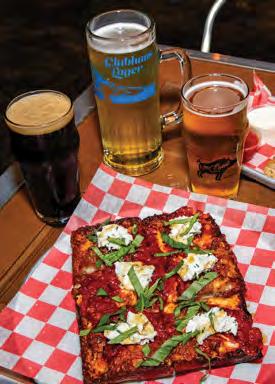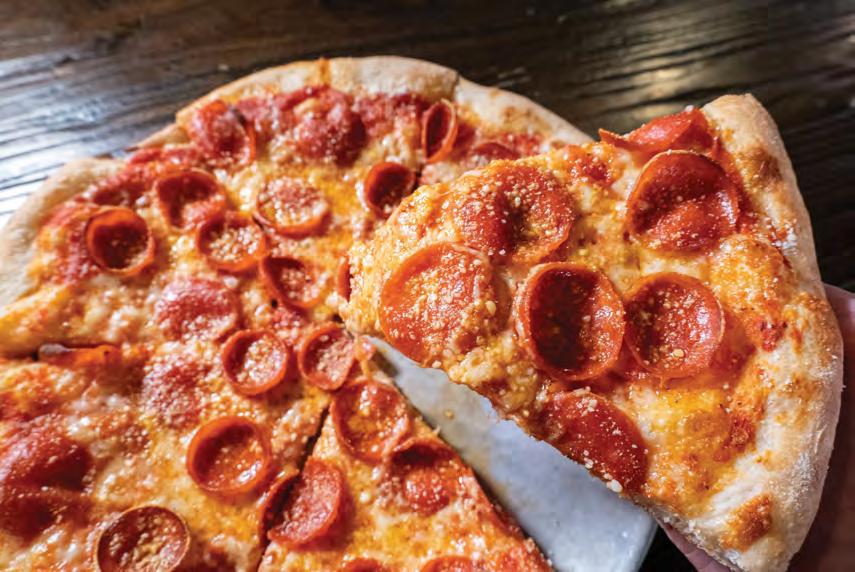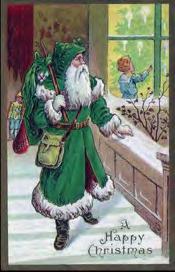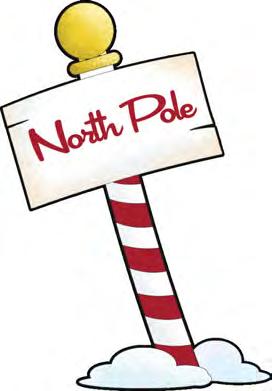










We’re Thrilled to Announce Our Return to Keller Williams Portland Premiere!

After careful consideration, Beltran Properties Group couldn’t be more excited to return to the KWPP family.
Our decision to return was driven by the incredible camaraderie, collaboration, and friendly competition that makes this team unique. Being part of such a successful and dynamic environment inspires us to push beyond our limits and thrive professionally and personally.
At KWPP, we’re surrounded by talented professionals who share a vision of excellence and are eager to continue growing with this outstanding team. This new beginning marks a return home and the start of an exciting new chapter in our journey.
Here’s to the future, the friendships, and all the possibilities ahead!



Led by Jaimy Beltran, a seasoned real estate professional in Portland since 2007, Beltran Properties Group is all about a personal, client-focused approach. We genuinely care about building authentic, long-term relationships and prioritizing our clients’ needs. With Jaimy’s proven experience and a dedicated support team, we ensure every home-buying or selling experience is smooth and stressfree. You can count on us to be there for you every step of the way, guiding you through your real estate journey.
Ranked among Portland’s top Realtors, Jaimy’s leadership cultivates a team united by collaboration and shared values. Our commitment extends beyond real estate; we’re dedicated to giving back through volunteer efforts and event sponsorships, making a lasting difference in the communities we serve. In 2015, Jaimy was named “Wilsonville Citizen of the Year” by the Rotary Club of Wilsonville. Jaimy is also a current member of the Rotary, which includes an upcoming term as the President of the Club. He has been an active board member of the
Wilsonville Chamber of Commerce since 2018, including two consecutive terms as Board Chair. Jaimy is also a past member of the Wilsonville Kiwanis Club. We don’t just guide clients through buying or selling a home—we help create lasting connections within those communities, and we invite you to be a part of this impactful journey.

Are you looking for a real estate partner you can trust? We’d love to help! Call us at 503.502.3330 or stop by our office in Wilsonville. At Beltran Properties Group, we’re here to prioritize your goals, and we can’t wait to work with you.






Dr. Hayden and Dr. Rose both earned their undergraduate degrees from Oregon State University and their dental degrees from OHSU School of Dentistry. Each year, our doctors participate in world-class continuing education courses in cosmetic dentistry, dental implants, and dental technology to ensure the restorations their patients receive are both expertly crafted and precisely placed.
• Complete care for all ages
• Oral and IV sedation to relax during treatment
• Advanced cosmetic dentistry
• Placement and restoration of implants
• Safe, mercury-free restorations
• Fixed implant and traditional dentures
• Invisalign® orthodontics
• Smile whitening
• TMJ treatment
• Sports mouthguards
• Emergency dental care









By Angie Helvey, Active Media
Photos by Malaina Kinne, Active Media
The Von Ebert brand has built a legacy with its awardwinning craft beers, but this locally-owned business offers much more than tasty brews. Founded in 2018 by father-son duo Tom M. Cook and Tom S. Cook, Von Ebert Brewing is named for the family matriarch, ‘Grandma Ebert.’ Her tenacious legacy and Von Ebert’s loose translation, ‘House of the Boar, ’ inspire the German-style lagers and scratch-made menu items customers know and love. Award-winning Brewmaster Sam Pecoraro runs the craft beer side, while Joe Janaszek manages the restaurant division.
with fresh toppings and every artisanal flavor combination you never knew you needed. Their thin-crust, hand-tossed pies come in three sizes, customizable for any group size and by the slice. Classic varieties like pepperoni and Hawaiian are available, as are the unique in-house creations like the Modern Marg, Chicken Bacon Ricotta and Hail the Boar, which features house-made red sauce, mozzarella, bacon, sausage and Canadian bacon.
The pizzeria has recently introduced a line of mouth-watering deep-dish pizzas that have been a massive hit among guests! Try the Chicken Bacon Ranch or the Hot Honey Ricotta Margherita, which comes with mozzarella, oregano, and red sauce and is topped with ricotta, basil, and hot honey. Happy hour is daily from 3 to 6 p.m. and offers $10 cheese and pepperoni pizzas with a $3 20 oz. Stein of Clubhouse Lager, which is by far the best deal on beer you’ll find in the Portland area.


The star of the show at Von Ebert Pizzeria & Taproom is by far the pizzas,
When visiting the taproom, you might be there for the pizza, but indulging in one of Von Ebert’s exceptional brews is hard to pass up. Premium beer is available on tap or in the can, from Italian Pilsners and American IPAs to Fresh Hop Beers and Seasonal Lagers. Their core German-style Pilsner — called Pils — is a best-seller and inspires flavors of fresh flowers, white peppercorn and lightly-toasted crackers. Kegs and growler fills are an additional option.
Von Ebert is also excited to announce that two of their alltime most popular varieties, Pils and Volatile Substance, are now for sale at Safeway and Fred Meyer. Volatile is a delicious Northwest IPA that won the gold medal for American IPA at the 2021 Great American Beer Festival and features tasting notes of smashed berry blend, sticky pine resin and sweet citrus.
The vibe at the pizzeria and taproom is fun and family-friendly. Their rockstar team includes longtenured employees like Trey, who’s been there for over ten years, and General Manager Jacob, who does a phenomenal job ensuring you get the same fantastic experience every

time you visit. The dining room is bright and open, with several TVs for watch parties, and the event

The family-owned business is thrilled to add a third taproom in Portland off Mississippi Ave, slated to open in early 2025. Von Ebert is looking forward to expanding their culinary offerings. “We have customers who’ve said we make the best New Yorkstyle pizza, and this is the only place they go in the Portland area,” says Joe. “We’re very proud of that. People often think of us as just a brewery, but we want them to know we don’t only make great beer; we also have killer pizza.”
Von Ebert Pizzeria & Taproom is located at 11800 NW Cedar Falls Dr in Portland. Please give them a call at (503) 716-8663 or visit their website at www.vonebertbrewing.com






Cheers to a classic holiday sipper
Ingredients
6 large egg yolks
1/2 cup granulated sugar
1 cup heavy whipping cream
2 cups milk
1/2 teaspoon ground nutmeg pinch of salt
1/4 teaspoon vanilla extract ground cinnamon, for topping
1/4 cup alcohol, optional (see note)
Directions
Whisk together egg yolks and sugar until light and creamy in medium bowl. In





•
•
•

saucepan over medium-high heat, combine cream, milk, nutmeg and salt. Stir often until it reaches a bare simmer. Add a big spoonful of hot milk to egg mixture, whisking vigorously. Repeat, one spoonful at a time to temper eggs. Once most of hot milk has been added, pour mixture back into saucepan on stove. Whisk constantly until slightly thickened (or until 160°F) — it will thicken as it cools. Remove from heat; stir in vanilla and alcohol (if using). Pour eggnog through fine mesh strainer into pitcher; cover with plastic wrap. Chill in refrigerator. Serve with sprinkle of cinnamon. Store in fridge up to 1 week.
NOTE: If you’re adding alcohol, start with ¼ cup brandy, bourbon, rum or whiskey added at same time as vanilla, or after eggnog cools. For a thinner, completely smooth consistency, pour mixture into blender with 1 or 2 tablespoons milk; blend until smooth.





It’s the holiday season and traditions abound. One tradition many families have is bringing a cut tree into their home and decorating it with twinkling lights and ornaments. Each year, these trees account for hundreds of fires across the nation. But keeping your tree healthy and green will help keep your holiday safe! Tualatin Valley Fire & Rescue encourages you to choose a healthy tree that has been recently cut or to cut one down yourself.
Below are some tips to keep your tree merry:
å Right before placing the tree in its stand, cut about 2 inches from the base of the trunk. This helps the tree draw up water.
å Once the tree is in its stand, add water daily or as needed.
å Place the tree at least 3 feet from any heat source such as space heaters, fireplaces, heat vents, etc. Trees placed in a room where fireplaces and woodstoves are used will dry out much quicker and should be placed as far as possible from them.
å Make sure the tree doesn’t block an exit.
å Use only decorative lights that have a label of a recognized testing laboratory and make sure the bulbs, strings, and connections are not damaged or broken.
å Never use lit candles to decorate a tree.
å Check for dryness by running your hand down a branch; if the needles fall off, the tree is too dry and should be taken down and disposed of properly.
å Never burn a tree in your fireplace. The combination of dry branches, pitch, and tree oils can ignite within seconds, sending sparks and flames into the room.
å Most communities in TVF&R’s service area have a recycling program where a dry tree can be disposed of properly.
å If your choice is an artificial tree, look for the label “Fire Resistant.” This does not guarantee the tree won’t catch fire, but it indicates the tree will resist burning and should extinguish quickly.
å When it comes to brightening your home with twinkling lights, TVF&R offers the following tips:
å Only use UL-approved, low-heat lights.
å Always use outdoor lights outside and indoor lights inside.
å Never use light sets with broken sockets, frayed and/ or cracked wires, or missing sockets. Any one of these problems may cause an electrical shock or a fire.
å Prior to using a light set, place it on a non-flammable surface and plug it in for 10 to 15 minutes to check for smoking or melting.
å Lights should only be used on fresh or fire-resistant plastic trees. Never use electric lights on a metal tree as the tree can become charged with electricity from faulty lights and a person touching the tree could be electrocuted.
å Fasten outdoor lights securely to exterior walls, trees, or other firm supports to protect them from wind damage. Do not use nails or tacks to hold light strings in place. Instead, use plastic light string holders or run your light strings through hooks.
å Only use outdoor-rated extension cords with outside lighting displays.
å Turn off all lights when you go to bed or leave the house. Lights can short out and start a fire.
For additional safety tips, visit www.tvfr.com.






OREGON BLACK HISTORY SPOTLIGHT: THELMA JOHNSON STREAT
By Oregon Black Pioneers
Thelma Johnson Streat was a painter and dancer who used her art to promote racial equity and education. Thelma Beatrice Johnson was born in 1911 or 1912 in the Eastern Washington town of Yakima. The Johnson family moved several times during Thelma’s childhood, with stints in Pendleton and Boise before settling permanently in Portland by 1920. Her father, James Johnson, was an artist and encouraged Thelma to become an artist herself from an early age. While still in high school, Thelma began winning local art prizes. She graduated from Portland’s Washington High School in 1932 and immediately launched her career as a professional artist.
In 1933, the Oregon Federation of Colored Women had an art exhibit at the New York Public Library. Several of Johnson’s works were featured in the show, and the exhibit gave her new exposure within the broader American art community. Johnson studied painting at Portland’s Museum Art School (today known as the Pacific Northwest College of Art) from 1934-1935, and at the University of Oregon in 1936.

In 1935, Thelma married Romaine Virgil Streat, a boxer who modeled for her drawing class. The couple moved to San Francisco where Thelma found work with the Federal Art Project, a Depression-era relief program for artists. Thelma’s work attracted the attention of acclaimed painter Diego Rivera, who she collaborated with on a mural for the 1939 Golden Gate Exposition. Rivera would write, “The work of Thelma Johnson Streat is in my opinion one of the most interesting manifestations in this country at the present. It is extremely evolved and sophisticated enough to reconquer the grace and purity of African and American art.” Rivera even painted Johnson into one of his own murals, which is today on the City College of San Francisco campus.
Thelma continued to grow as a solo artist. Her paintings were exhibited at San Francisco’s De Young Museum and the San Francisco Museum of Art. One of her works, Rabbit Man, was purchased by New York’s Museum of Modern Art in 1941, making it the first piece by a Black woman included in their permanent collection.

Thelma used her art to promote racial equality. Works like her “Death of a Negro Sailor” criticized segregation, and she debuted a series of paintings called “The Negro History” depicting prominent people of African descent from the past. She also began practicing interpretive dance in the 1940s, performing around the world for dignitaries like Eleanor Roosevelt and Queen Elizabeth II.
In 1948, Thelma divorced her husband and married her manager, John Kline. Thelma and John moved to Hawaii and opened a children’s art school. They later opened another on Salt Spring Island in British Columbia. Here, Thelma taught her students art and dance inspired by African, Polynesian and First Nations traditions.
Thelma enrolled at UCLA to study anthropology in 1956, but suffered a heart attack and died there that same year. Her brief but prolific career was largely forgotten in the decades that followed. Today, Thelma is finally being recognized as one of the most important West Coast artists of the early 20th century. Paintings by Thelma are today part of the collections of the Museum of Modern Art, San Francisco Museum of Art, Portland Art Museum, and the National Museum of African American History and Culture.
Oregon Black Pioneers is Oregon’s only historical society dedicated to preserving and presenting the experiences of African Americans statewide. To learn more, and to support this nonprofit, visit oregonblackpioneers.org.
©Oregon Black Pioneers, 2024





Mattress World Northest will be supporting Special Olympics Oregon via the Polar plunge. They will be donating time, money and TV advertising in addition, they will be getting donations from their customers. Their main fundraiser, The Polar Plunge, takes place February 24 11 a.m. at Willamette Park in Portland and a 5k fun run at 10 a.m. “Polar Plunge is your chance to step out of your comfort zone by jumping into an unforgettable experience that directly impacts the lives of Special Olympics Oregon Athletes. By participating you provide 5,000+ Special Olympics Oregon Athletes access to sports, activities, and community,” says Special Olympics Oregon.
Why is this nonprofit so important? “Special Olympics Oregon believes in the transformative power and pure joy of


athletic competition. Every day across the state, we help children and adults with intellectual disabilities become athletes and grow a strong, supportive community of advocates. Through year-round training and serious competition, Special Olympics participants journey along a proven pathway to better health, essential life skills and lifelong friendships.” Please help us raise funds by donating online or visiting one of our local stores.
We are family-owned and -operated and we strive to greet every customer with a smile, listen to your needs and concerns and give a great overall experience.
Get a better night’s sleep and help support your community at one of our many local Mattress World Northwest locations. Check us out online at mattressworldnorthwest.com to find the closest location and store hours.






By Robert Matsumura, Active Media
As the holiday season rolls around, Santa Claus assumes center stage. But where exactly did this rotund, jovial old man in a red suit originate, and how did he become the iconic symbol of Christmas that he is today? In truth, the history of Santa Claus is a fascinating tale that intertwines folklore, legends and a sprinkle of entrepreneurial ingenuity.
Santa Claus as we know him today traces his roots back to a number of historical figures, each contributing to the contemporary version we know and love. Perhaps the earliest inspiration for Santa Claus was Saint Nicholas, a Christian bishop of the 4th century, renowned for his acts of kindness and gift-giving. In time, Saint Nicholas became the patron saint of children, sailors, merchants, archers and brewers, among others.
In the British Isles, a character known as Father Christmas emerged during the mid-17th century and was frequently depicted as a bearded man garbed in green, symbolizing the spirit of the season. By the 18th century, however, the concepts of Father Christmas and Saint Nicholas merged, resulting in a hybrid figure that blended elements from both traditions.

The American version of Santa Claus began to take shape in the 18th century. Influenced by Dutch and German settlers, the name “Santa Claus” evolved from the Dutch term “Sinterklaas.”
During this period, “A Visit from St. Nicholas” (commonly known as “The Night Before Christmas”), a poem published in 1823, played a pivotal role in shaping the modern image of Santa. This poem described Santa


as a rotund gift-giver in a red suit who utilized chimneys rather than the front door for his Christmas visits. The poem, attributed to Clement Clarke Moore, established not only Santa’s magical nighttime journey around the world delivering toys to children, but specified his vehicle of choice as a sleigh powered by eight reindeer with specific names and attributes. Also introduced in the poem was the idea of Santa monitoring children on his “naughty and nice” list and filling stockings accordingly.
The classic image of Santa Claus in a red suit with a white beard was tweaked further in the 1930s due to a marketing campaign by Coca-Cola. The company’s advertisements depicted Santa as plump, rosy-cheeked, and garbed in a red and white outfit and hat. Although Santa had been portrayed in robes of other colors prior to this marketing campaign, CocaCola’s version of Santa Claus was embraced by the popular imagination and remains the image we associate with him to this day.

As the holidays roll around, and images of Santa Claus abound, know that, like so many things in life, Santa has evolved from his ancient origins as Saint Nicholas and Father Christmas to the iconic figure of Christmas cheer crafted by an imaginative poet and creative corporate advertising. One thing is for certain, whether you’re a child or an adult, the holidays would not be the same without Santa, his reindeer and the spirit of the season that he represents to so many around the world!












































































By Robert Matsumura, Active Media
Every year around December 21st in the Northern Hemisphere, the winter solstice occurs, marking the shortest day and longest night of the year. Through the centuries this annual cosmic event has inspired stories, myths, and celebrations, blending elements of nature, light, and spirituality in traditions shared by numerous cultures across the globe. At the heart of these ancient rituals and festivities is the summer solstice’s association with birth and renewal, a seasonal change in nature that heralds the coming of spring and an end to the darkness of winter.
Before calendars and clocks were invented, people lived in accordance with the sun’s cycles. In a sun-centric world the solstice served as a pivotal marker in their agricultural, spiritual, and social lives. For many cultures, the winter solstice was viewed with trepidation — a time when the world could fall into chaos, a dark period where the sun was symbolically at its weakest — before returning to glory as the days lengthened. The summer solstice was a reminder of the sun’s return, bringing warmth, growth, and sustenance. Elaborate feasts were often held, sacred rituals performed, and fires lit to encourage the rebirth of the sun.

One of the most famous winter solstice traditions took place in Northern Europe where ancient Germanic and Norse tribes celebrated Yule. A festival that honored the Norse gods, particularly Odin, Yule focuses upon the rebirth of the sun. Evergreens, symbolizing eternal life, were central to Yule, and homes were decorated with boughs of holly, ivy, and mistletoe — plants resistant to winter’s chill. Over time, these traditions blended with Christian customs, resulting in today’s wreaths, garlands, and Christmas trees.
Across the Roman Empire, the solstice celebration known as Saturnalia was a time of joyous revelry. Saturnalia honored Saturn, the god of agriculture and time with festivities that flipped societal norms. During Saturnalia, carnivallike chaos reigned — slaves could become masters for a day, gambling was permitted, and everyone feasted. It was a season of merriment, gift-giving, and the relaxation of social rules. Everyone — rich and poor alike — could partake in the festivities. Saturnalia had a profound influence on later Christmas celebrations, particularly the communal feasting, exchanging of gifts, and sense of goodwill.
The British Isles: Stonehenge and the Celtic Solstice

In East Asia, the Dongzhi Festival signals the arrival of winter and the rebirth of yang energy. Dongzhi, meaning “extreme of winter,” derives from the concept of yin and yang — the cosmic balance of dark and light. While the winter solstice represents the darkest day, it also signifies the gradual rise of yang energy and the light.
In the British Isles, Stonehenge remains one of the most iconic sites associated with the winter solstice. Constructed thousands of years ago, this mysterious stone circle aligns perfectly with the solstice sunrise, drawing crowds of onlookers annually to witness the event. Though Stonehenge’s origin is unknown, it’s clear that its creators were deeply attuned to the celestial rhythms, and utilized the monument to mark important seasonal shifts.
In the Celtic world, the summer solstice was a time when the Oak King triumphed over the Holly King in their eternal battle for earth’s light. The Oak King, symbolizing the waxing sun, would begin to grow stronger with the longer days, heralding the return of spring. Rituals involved bonfires, feasts, and offerings to the gods in gratitude for the return of the light.
In China, Dongzhi is a time for family reunions and feasting on specific culinary favorites such as tangyuan — glutinous rice balls served in sweet syrup, symbolizing family unity. In southern China, dumplings are also popular and are believed to protect against the winter cold. Dongzhi is also a time for reconnecting with ancestors, and the belief is that one’s good fortune and health in the coming year depends on harmony between the living and the deceased.
For many Indigenous cultures of North America, summer solstice rituals were held to celebrate the return of the sun. The Pueblo peoples celebrated Soyal with purification rituals and dances meant to awaken the sun from its winter sleep. Central to the ceremony is the creation of kachina dolls — symbolic representations of deities or spirits — that play a crucial role in the life cycle.
Far to the North, the Inuit people of Alaska and Canada honored the summer solstice with a festival called Quviasukvik, a time when families convened to share food and stories, reflect on the past and anticipate the return of the sun. As a people accustomed to harsh Arctic winters, the summer solstice indeed was cause for celebration. Longer days and the return of the sun literally represented survival in the brutal conditions of the North.
In the Southern Hemisphere, the summer solstice occurs in June. Among the Incas, Inti Raymi, the festival of the sun was held in honor of Inti, the sun god. The Incas, who revered the sun as their primary deity, performed elaborate ceremonies in honor of Inti to ensure good harvests in the coming year. At the heart of the solstice celebrations was the city of Cusco, where ritual sacrifices, offerings and dances were performed to demonstrate the people’s gratitude and reverence for the sun’s critical role in sustaining life. Modern day celebrations honoring Inti are held to this day.
While solstice celebrations have evolved over the centuries, themes of light, rebirth, and reflection are timeless. From spiritual gatherings to cozy times around the hearth, the winter solstice invites us to anticipate the return of the sun and all that it brings to the earth. So as the winter solstice rolls around, take a moment to slow down, reflect, and find balance, like our ancestors once did. On the darkest of days, the solstice is a celebration of endurance, hope, and abundance that light makes possible in our lives.

1 Oregon state tree and tree in “A Charlie Brown Christmas” (2 words)
4 German-themed Washington town known for its Christmas spirit
6 Christmas beverage also known as “milk punch”
8 Last name of Ebenezer Scrooge’s ghostly business partner
10 Nine are gifted in “The Twelve Days of Christmas” (2 words)
12 Popular cuisine for Jewish people on Christmas and often the only type of restaurant open on Dec. 25
13 Jewish candelabrum with nine branches lit during Hanukkah
14 Number of reindeer pulling Santa’s sleigh
1 Disney character that is a Christmas Eve staple in Sweden and the character that inspired the current U of O mascot (2 words)
2 George Bailey’s beloved town in “It’s a Wonderful Life” (2 words)
3 Third reindeer shouted in “Rudolph the Red-Nosed Reindeer”
5 Christmas decoration originally made from strands of silver
7 Opener or famous holiday ballet
9 The Christmas _____ Parade lights up the Willamette River
11 European country in which the Christmas tree originated
13 Another name for the three wise men


30+ Years of Experience
We are experienced in a broad variety of projects types. Be it roofing, siding, gutters, windows, decks, skylights or sun tunnels – or all of the above! We have the skills to get it done right. We offer financing, pay at closing, and other flexible payment plans. We are available at all hours, and are always aiming to be timely and make you a priority. All consultations with our estimators within our service areas are free of cost, travel charge, and pressure.
We Strive To Be a Level Above The Competition
HOMEMASTERS has been trusted in the industry since 1990 and has a wake of shining online reviews to show for it (Google, HomeAdvisor, Facebook, Yelp, Angie’s List). We believe in the homeowner’s rights to honest and fair treatment in all areas including cost, service, and quality of work. We strive daily to be communicative and consistent in our dealings with clients. We are licensed, bonded, and insured, and able to provide current documentation upon request.








By Patti Jo Brooks, Active Media
Losing one’s home is a devastating situation and it can happen to just about anyone. Even full-time employment today is not a guarantee of keeping your home in the future. Ultimately, homelessness affects everyone in the community in one way or another. Tigard and Washington County are fortunate to be served by Family Promise of Tualatin Valley, a nonprofit dedicated to assisting homeless and nearhomeless families. During this season of giving, reach out to Family Promise and share what you can. As a compassionate community, your support and volunteer efforts will go a long way towards helping these families.

“When you have kiddos, you’re looking for the safest place you can possibly be,” says Elise Laubach, spokesperson for Family Promise of Tualatin Valley. “Folks will live in their vehicle or they’ll be doubled up and kids will be couch-surfing.” Sometimes these families will use whatever resources they have to rent some hotel space and “kind of cobble things together,” Elise relates. In addition to families with children, Family Promise also serves some adults-only households of seniors and elderly or those who have fragile medical conditions.
Family Promise of Tualatin Valley (FPTV) is part of the Washington County shelter system and receives referrals based on need through Community Connect. Totally unsheltered, pregnant, with a newborn, or certain medical considerations receive priority placement. The Tigard facility is currently open and houses around 50 to 60 families, a number

that will increase to 70 families once the remodel is completed. Purchased with funding through Project Turnkey in partnership with Washington County and the City of Tigard, FPTV took possession of the facility June 2023. Looking optimistically at a spring completion date, the shelter upgrades will include a commercial kitchen, expanded laundry facilities, and a remodeled playroom.
A 40-member staff provides around the clock services and includes housekeeping, maintenance, operations and guest services. Approximately 25 members are case managers responsible for everything from housing navigation to those who work with Rapid Rehousing (a program that bypasses the shelter system and rehomes families directly). The average stay at FPTV shelter is four months. Many families are able to move into housing with voucher support or temporary rental assistance provided by Supportive Housing Services (funded through a Portland Metro bond).

Life enriching programs are offered by way of after school tutoring, adult literacy, community events, bingo, movie nights and events that cover all the holidays including a women’s acapella group that comes to sing during the holiday season. There’s a gift room on site as well as a food pantry and clothing pantry. Volunteers are always needed, particularly to assist the kitchen manager with off-site meal preparations during the remodel phase. “We wouldn’t be where we are today without our community support,” Elise says, acknowledging the local volunteers, donations, drives and business involvement. To learn more, visit familypromiseoftv. org. Sign up for the newsletter and stay informed of drives requesting needed items. Call (503) 4272768 or email info@ familypromiseoftv.org.

By Robert Matsumura, Active Media
Traditionally, Christmas evokes images of Santa Claus, twinkling lights, stuffed stockings over the hearth and gifts beneath the tree. In the heart of the Alps, however, another figure lurks in the shadows of the holiday season, a horned and hairy creature that has for centuries been a part of Central European folklore — Krampus.
The origins of Krampus reach back to pre-Christian Alpine traditions. The name Krampus derives from the German word krampen, meaning “claw.” Rooted in ancient Norse and Germanic pagan customs, specifically those centered around winter solstice celebrations, Krampus was a horned beast with shaggy fur and a devilish appearance who roamed the land during the dark of winter. With the onset of Christianity however, devilish figures were frowned upon, so rather than eliminating Krampus altogether, he was reinterpreted as a cautionary figure who would scare children into proper behavior, working alongside the benevolent St. Nicholas.
Krampus and St. Nicholas: An


For every well-behaved child a troublemaker existed, and this was where Krampus came in. While St. Nicholas rewarded the good children with presents and treats, Krampus dealt with the naughty ones with spankings and even hauling them away to the underworld in some cases. The duality of St. Nicholas and Krampus mirrored the Christian concept of heaven and hell — good and evil — where virtue is rewarded and vice is punished.
Krampusnacht:
On the eve of St. Nicholas Day, December 5, Krampusnacht — “Krampus Night” is celebrated across Central Europe.
On this night, men don terrifying costumes and roam the streets as Krampus, scaring children (and sometimes adults) in Krampus parades known as Krampuslauf. These days, Krampus has expanded beyond his traditional Alpine roots. Global media, films and TV shows have embraced Krampus, and in the United States, Krampus has become something of a cult figure. Krampusthemed events, parties and even horror films have reintroduced him to a new generation.
Much of the appeal of Krampus lies in his contrast to the commercialized image of Christmas in modern culture. Krampus represents the balance between light and dark, joy and fear — a reminder that the holiday season, while full of cheer, also contains an element of mystery and unease.
Today Krampus continues to be popular around the world, demonstrating the power of folklore and its ability to evolve over time. Whether you find him fascinating, frightful or both, there’s no denying that Krampus has carved out a unique place in holiday history — one where the naughty children had better beware!


“Now I have a machine gun. Ho ho ho.” Yes, Die Hard is a Christmas movie and this is not up for debate — it’s objectively true. The movie takes place during a holiday office party, it has Christmas music, John’s wife is named Holly, there are presents, John wears a Santa hat, it snows. Millions of Americans watch this movie on Christmas Eve every year, and most polls skew in favor of it being a Christmas movie. So there. And with all the action, it’s one heck of a Christmas movie!
The infamous John McClane (Bruce Willis), a NYC cop, is visiting his estranged wife Holly (Bonnie Bedelia) and two daughters in LA on Christmas Eve. He joins his wife at her holiday office party when terrorists suddenly take everyone hostage, and no one else can save them but John! Also starring Alan Rickman, Paul Gleason, Willam Atherton, and more. It’s violent and exciting, funny, full of foul language, and rated R, so it’s ok for teens and adults only.
“Keep the change, ya filthy animal.” Probably the most iconic Christmas movie ever made, Home Alone is jam-packed full of hilarious quotes, slapstick and action, and remains an unmistakably heartwarming family movie. If you’ve lived under a rock for 35 years and don’t know, the story follows Kevin McCallister (Macaulay Culkin) who’s left home alone after his family forgets him in Chicago when they travel to Paris for Christmas. Being a bit of a black sheep and the youngest in a large family, Kevin welcomes this time alone when his wish comes true — that is, until “Wet Bandit” burglars Harry (Joe Pesci) and Marv (Daniel Stern) start scoping out his house. From there, Kevin develops an elaborate plan to defend his home while trying to remain self-sufficient without his family, learning many lessons along the way. Also starring Catherine O’Hara, John Heard, Kieran Culkin, John Candy, and more. One of my all-time favs, this is rated PG for slapstick violence and ok for older kids. And if you love this, Home Alone 2: Lost in New York is also fantastic.



“Dear Santa Claus, How have you been? Did you have a nice summer?” A Charlie Brown Christmas is a timeless holiday movie that’s perfect for families, offering a heartwarming tale about the true meaning of Christmas. This cartoon follows Charlie Brown as he wrestles with the commercialization of the holiday season, feeling sad despite all the holiday fun happening around him. With the help of his friends and a scrawny little Christmas tree, Charlie discovers the joy and love of togetherness. What makes A Charlie Brown Christmas so special is its universality — the story is sweet and simple, with humor and themes of kindness and reflection that both kids and adults will appreciate. Also, not to be forgotten is the jazz-infused soundtrack by Vince Guaraldi Trio, which adds an extra layer of nostalgia. The movie is unrated but views like a G — wholesome enough for the whole family.
Stream these movies where available, or rent from your local movie store, library or rental kiosk.











Tap into the power of diverse perspectives and unleash your potential as an ethical leader. Our MBA community will empower you to make a lasting impact in a world that demands creative, sustainable solutions.
Professionally Transformative. 80% of our graduates say the program helped them get a promotion, land a new job or earn more money.
Ethically Foundational. Gain a deep understanding of ethical issues that arise in the workplace and develop the decision-making tools you need to lead with integrity.
Flexible & Convenient. Attend classes in Tigard and earn your MBA in 14 months, or join us online and receive your degree in 24 months.
Start Your Journey Today Scan the QR code for details and email us at mba@georgefox.edu

















AVAILABLE DECEMBER 9th-31st





















